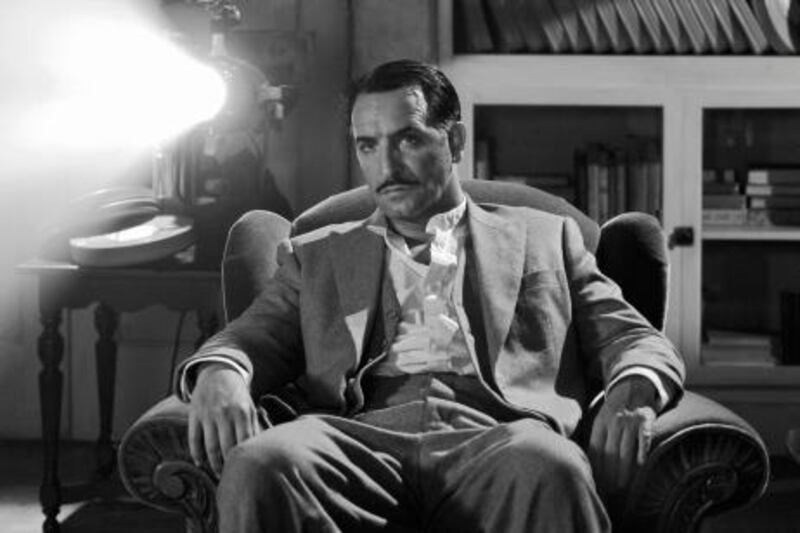It must be the least likely cultural renaissance in years: as cinemas obsess over 3D and crystal clear digital sound, there's evidence of a real resurgence in silent filmmaking. And this is no Charlie Chaplin-inspired nostalgia-fest. Some of the most interesting - and biggest - films of recent years owe a huge debt to the silent film era of the 1920s.
Last week, some European broadsheet newspapers gave more prominence to their gushing reviews of Le Quattro Volte, an Italian film with no audible dialogue and no music, than the eagerly awaited Hangover II. And at Cannes last month, the Weinstein brothers, movie moguls more notable for Pulp Fiction and The Lord Of The Rings, snapped up The Artist, a new, dialogue-less film. Astonishingly, The Hollywood Reporter - who should know about such things - said it was in "Best Picture contention" for next year's Oscars.
So just how did we get from a seemingly outdated art form to Oscar buzz in 2012? For some time now, arts festivals and film venues across the world have commissioned orchestras and bands to provide live scores to screenings of classic silent films. FW Mernau's 1922 vampire chiller Nosferatu is a particular favourite on the circuit, performed almost every week somewhere on the planet, but as the popularity of such events grew, so did the repertoire. At the Latitude Festival in the UK next month, there are five new scores to silent films such as Germaine Dulac's surrealist The Seashell and the Clergyman (1927) and Dr Jekyll and Mr Hyde (1920). The fact that they are to be composed and performed by established stars such as Grammy Award-winning Imogen Heap and up-and-coming talent such as Blue Roses, highlights not just the broad interest in silent moviemaking but how a musical backdrop to a scene can be as dramatic as a powerfully spoken line.
The resurgence of interest in silent films from the moviemakers themselves can be tracked back, surprisingly, to two blockbuster movies of this century. Wall-E is one of Pixar's most triumphant animations, full of loveable charm. But how are we introduced to the world of this rusty robot? Not through the human voice because lonely Wall-E is the last robot left on a deserted planet. He literally has no one to talk to. So for the first 30 minutes there is no human dialogue at all - just bleeps and rattling. It was to Pixar's great credit that they imbued Wall-E with such physicality and warmth that it was genuinely possible to suggest he was the 21st century's first silent movie star.
And for the ever-diminishing group of people who still think that animation id somehow less culturally significant, Paul Thomas Anderson made cinemagoers wait almost 15 minutes for the first line of dialogue in There Will Be Blood. In its place was a scene of great, oil-based industry, set to a stirring score by Radiohead's Jonny Greenwood.
Of course, both Wall-E and There Will Be Blood did in the end bow to modern convention and proceed with dialogue. But their success did prove in a small way that people were ready for silent filmmaking. All of which Frenchman Michel Hazanavicius has taken to its logical conclusion with The Artist. It will be interesting to see how much of a pure homage The Artist is to the silent film era. After all, it's filmed in black and white, set in 1927, and tells the story of a silent movie star whose career is on the skids with the advent of the "talkie".
Admittedly, it would take a really courageous filmmaker and studio to make a feature length silent movie set in the present day, but Le Quattro Volte is unquestionably the next best thing. Michelangelo Frammartino's film charting life in rural Calabria, southern Italy, does have the odd word, but they're so unremarkable, outside Italy it has been screened without subtitles. The soundtrack to the daily efforts of a shepherd and his animals is the wind, the bells and the bleating of the goats.
In essence, it's a meditative film on the passing of seasons and traditions - and offers the best clue yet as to why silent (or in this case, perhaps, quiet) filmmaking is on the rise. In a world where we're bombarded with noisy, bombastic sounds, exploding through our eardrums via the wonder of Dolby Digital, sometimes we need a little quiet so we can reflect. And sometimes, there's great power in saying nothing at all.





